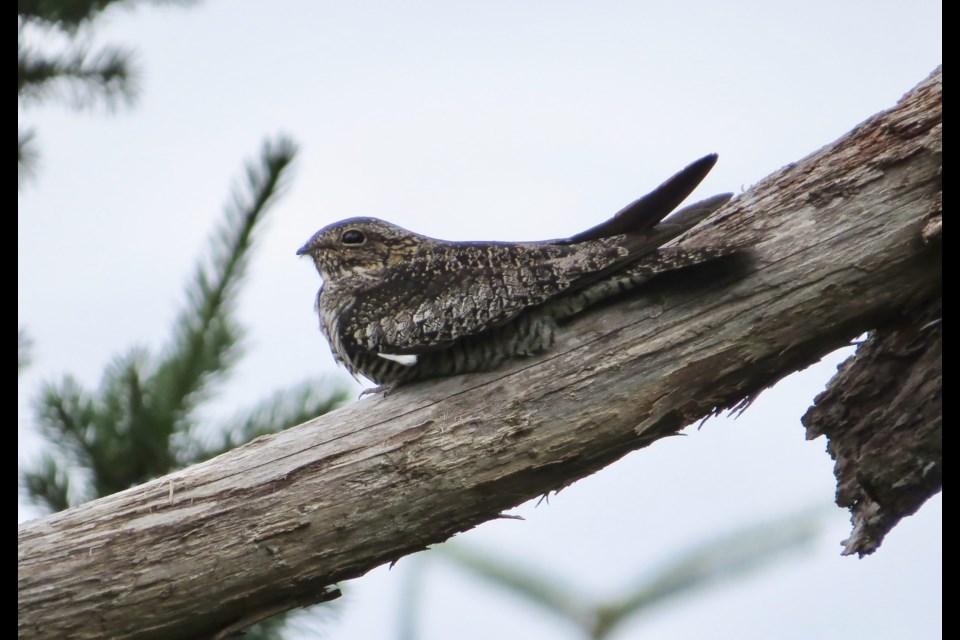A conservation covenant on Pender Island dedicated to providing sanctuary for the common nighthawk has recently doubled its protected area with the help of Island Trust Conservancy.
Kathryn Martell, ecosystem protection specialist at Island Trust, explained that the Nighthawk Hill Natural Area Protection Tax Exemption Program (NAPTEP) covenant was first put in place in 2012 to protect an upland dry arbutus ridge area, and that area has now been dramatically expanded.
Martell said a key part of this expansion is it includes a transitional zone from a wetland up a hill to a dry slope, where the nighthawks prefer to nest.
Transition zones are “incredibly important,” said Martell. “We need to be protecting these kinds of edges in places where species are going to need to move around.”
Common nighthawks are aerial insectivores, meaning their diet is entirely made up of insects, which they consume while flying.
Martell said that migratory aerial insectivores are in steep decline around the world, with some species seeing populations drop by 90 per cent. She said that, globally, the decline of insectivores is linked to increased use of insecticides as well as habitat loss.
Martell said it is difficult to gauge how many common nighthawks there are in B.C. and estimates that there are between 10,000 and a million.
The hawks are found throughout most of the province, are nocturnal and crepuscular (meaning they feed at dawn and dusk) and nest on the ground. All of which makes them challenging to survey.
“A lot of people will have almost stepped on one, because the brooding adult bird will just stay on the nest until you've almost stepped on it,” she said.
Martell said that over the last 15 years, nighthawk numbers have stabilized, particularly to the north, in the boreal forest, a positive change from the decades of population decline they faced before.
Federally, the common nighthawk has recently been down-listed to a species of special concern from threatened, however, in B.C. they have remained at the special concern level.
Martell said that one of the key areas in the conservation area is the small, forested, seasonal wetland.
“That type of small wetland has declined by more than 70 per cent over the last 50 or 60 years, very few of them are left,” she said. These areas act as a critical ecosystem connectivity point, being at the headwaters of a small creek and also provide habitat for ”at-risk amphibians and other small little critters that need those wetlands and feed on the insects that live there.”
She remarked how wonderful it was to work with landowners who are on the same page, entering a permanent conservation covenant that restricts what any future landowner can do. Agreements like this come from a love of natural areas and a desire to protect them, she said.
The Islands Trust Conservancy's NAPTEP provides financial incentives to choose land protection over development, with a focus on sensitive ecosystems, key habitats and special geological features. Lands registered in a conservation covenant through this program receive a 65 per cent annual property tax exemption.
While the common nighthawk is the only rare species in the area, a multitude of other species call it home, such as turkey vultures, eagles as well as sharp-tailed snakes and Western screech owls.
Jordan Copp is the Coast Reporter’s civic and Indigenous affairs reporter. This reporting beat is made possible by the Local Journalism Initiative.



